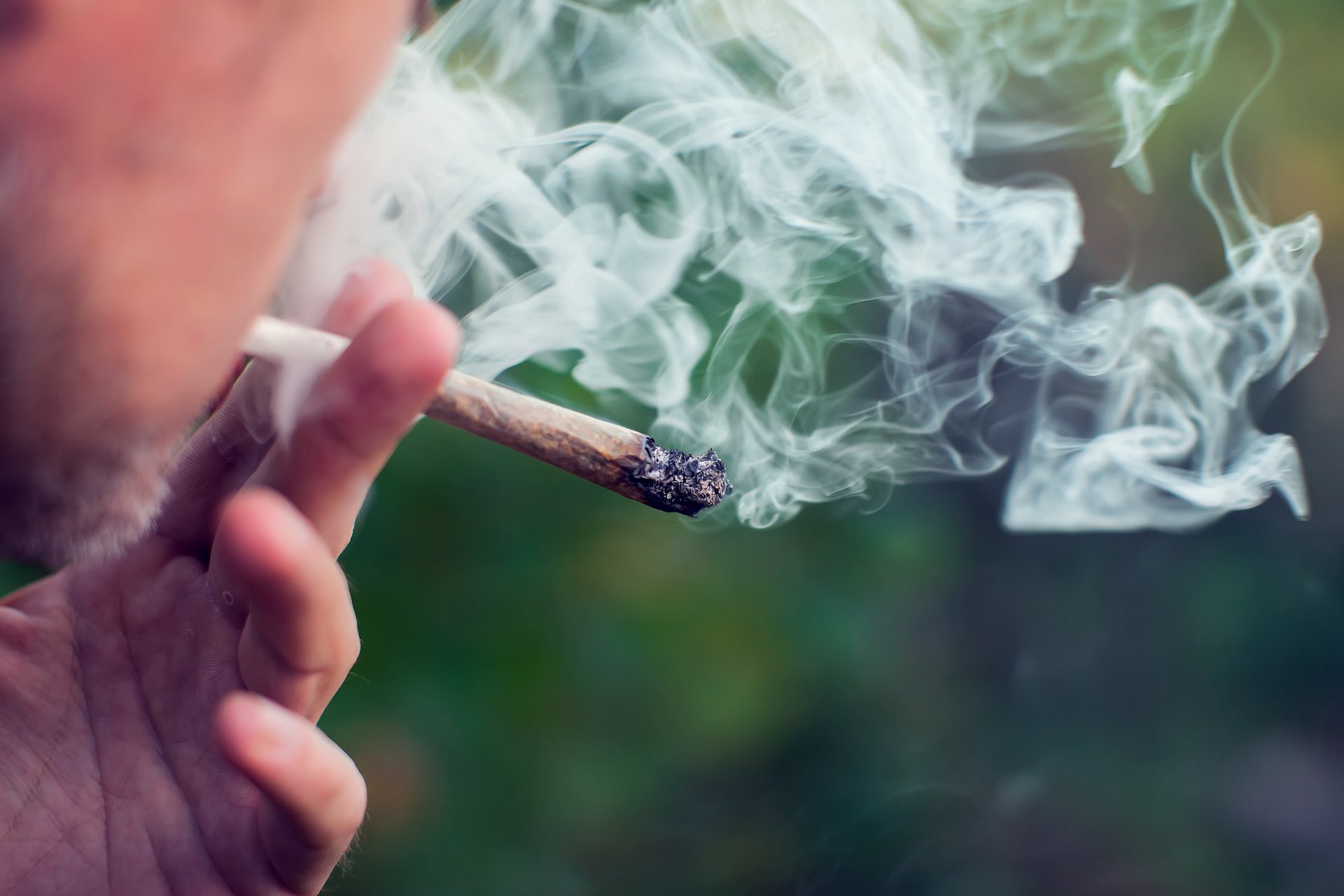In 1998, Ross Rebagliati took the gold medal for the men’s giant slalom snowboarding event at the Winter Olympics in Nagano, Japan. The day after his victory, he was stripped of his medal following a positive test for marijuana. Rebagliati’s urine test showed 17.8 nanograms in his system, while the limit at the time was 15 nanograms.
Rebagliati maintained that the positive test was caused by secondhand smoke he inhaled at a party the night before he left for the Olympics, and a contentious appeal saw Rebagliati reinstated with his gold. Still, the event left many wondering—just how potent is secondhand cannabis smoke?
Beyond the issue of accidentally getting high, there are respiratory risks associated with secondhand weed smoke. Let’s look at the effects of secondhand cannabis smoke, how it compares with secondhand tobacco smoke, and also whether secondhand cannabis vapor poses any health problems.
Risks associated with secondhand cannabis smoke
Research tells us that secondhand cannabis smoke presents two significant risks for non-smokers. For starters, individuals who are not actively smoking but inhale secondhand weed smoke may become mildly intoxicated from THC. The other issue is that cannabis smoke contains hundreds of different types of chemicals and particulates (tiny particles of matter) that can be toxic to those who inhale it—secondhand or not.
Related
What is a cannabis contact high?
Does secondhand smoke lead to a contact high?
Back in 2014, a group of Johns Hopkins researchers carried out a study to learn more about the effects of secondhand weed smoke on non-smokers.
The researchers placed six cannabis smokers and six non-smokers in a small sealed chamber for three one-hour sessions.
- In the first session, the chamber was unventilated, and the smokers were given joints containing 5.3% THC to smoke.
- In the second session, the chamber remained unventilated, and the smokers consumed 11.3% THC joints.
- The final session allowed ventilation fans to run in the chamber while the smokers again consumed 11.3% THC joints. The ventilation system was designed to emulate typical home air-conditioning conditions based on HVAC-building standards.
The findings revealed two critical factors: Ventilation and THC potency both play a part in determining whether non-smokers returned positive marijuana drug tests.
In the first session, one non-smoker produced a positive drug test with THC levels around the 20 nanograms/mL cutoff (although, this is significantly lower than the federal cutoff for a positive screen, which is 50 nanograms/mL). In the second session, four non-smokers produced positive tests up to 22 hours after exposure.
No participants in session three (the ventilated session) had any positive tests, showing that room ventilation played a role in lowering secondhand smoke exposure. Further analysis showed that the individuals breathing secondhand smoke during the first two sessions experienced some mild cognitive impairment.
Shop highly rated dispensaries near you
Showing you dispensaries near
However, even the study’s authors acknowledge that the first two sessions of the study were somewhat unrealistic. One researcher described those test conditions as a “worst-case scenario” because those conditions could not “happen to someone without him or her being aware of it.” In other words, the study tested for the likelihood of secondhand smoke intoxication by creating an extreme situation that was unlikely to happen in reality.
The study’s conclusion also conceded that in more normal circumstances, positive drug tests among non-smokers would be unlikely, limited to the day after immediate exposure, and would only occur when exposure to secondhand smoke was extreme (i.e. in a closed room with no ventilation). The findings of the third testing session are perhaps therefore the most applicable to real-life: In a ventilated, air-conditioned room, those exposed to secondhand weed smoke wouldn’t test positive for THC.
Increases in particulate matter
A more recent study in 2022 explored the effects of bong smoking and found that bong smoke significantly increased the quantity of particulate matter—microscopic solids or liquid droplets— in the air of a space up to 1,000 times.
In one session monitored 12 hours after smoking stopped, particulate matter in the air remained more than ten times the concentration in the room before smoking. The researchers emphasized that even 15 minutes of bong smoke produced a particulate concentration more than twice the Environmental Protection Agency’s hazardous air quality threshold. Exposure to particulate matter above the suggested guidelines has been linked to reduced lung function and increased mortality from lung cancer and heart disease.
However, while there’s conjecture about the effects of secondhand weed smoke on health, no research has yet established a direct causal link between secondhand smoke and any illness or disorder.
Cannabis clinician Dr. Benjamin Caplan, MD, Founder and the Chief Medical Officer of CED Clinic and CED Foundation emphasizes that available research needs to be contextualized, and that assumptions and biases can lead people down the wrong path.
He points out that public health science has repeatedly demonstrated that near-constant exposure to air pollution in urban settings is linked to a higher risk of morbidity and mortality.
“It is hard for anyone to convincingly argue that the dangers of cannabis smoke, consumed secondhand, poses greater harm than the ever-present smoke and smog of modern city life,” he reflected. “Whether or not secondhand cannabis smoke represents a meaningful drop of toxicity or not—and the debate is justified and ongoing—it is likely, literally, a small drop in a large bucket.”
Related
What is hotboxing with cannabis and does it work?
Secondhand cannabis smoke vs. secondhand tobacco smoke
There’s a widespread conception that weed smoke isn’t as harmful as tobacco smoke. As many as 27% of young adults believe secondhand cannabis smoke exposure is safe. However, evidence suggests that both secondhand cannabis and tobacco smoke exposure can trigger asthma attacks, lung irritation, and respiratory infections.
Cannabis smoke may also produce more particulate matter than tobacco. In the 2022 bong-smoking study mentioned above, the researchers discovered that bong smoke created four times as much particulate matter as cigarettes. They pointed out that this level of air pollution could potentially contribute to many health problems for those exposed to secondhand smoke, not to mention the smokers themselves.
However, research also suggests that tobacco smoke, secondhand or otherwise, is significantly more carcinogenic than cannabis smoke. Cannabis smoke hasn’t been causally linked with tobacco-related cancers such as lung, colon, or rectal cancer.
One study speculates that tobacco smoke is more likely to cause lung cancer than weed smoke due to the beneficial activity of compounds present in the cannabis plant. The pharmacological properties of cannabinoids in weed may minimize carcinogenic (cancer-causing) activity in several ways: THC, for example, can inhibit the activity of certain enzymes that are needed to activate the cancer-causing components of smoke. Large-scale clinical studies comparing cannabis and tobacco smokers are needed, however, to learn more and confirm this theory.
Overall, Dr. Caplan emphasizes that much of the research on secondhand tobacco smoke risks has been loosely applied to secondhand cannabis smoke, without adequate evidence.
“In terms of chemical constituents, nicotine is a poisonous toxin, with a plethora of ill effects ranging from promoting cancer and respiratory disease to wreaking cardiovascular damage and mental, oral, reproductive, and addictive consequences,” he said. “These effects are rumored to be relevant to cannabis, though the evidence is far less clear.”
Is secondhand weed vapor harmful?
With the popularity of vaping, it’s worth diving into the data on the effects of secondhand weed vapor. Of the evidence available, it appears that secondhand vapor may also pose some risks.
In a recent study carried out in a well-ventilated cannabis dispensary and consumption space where vaporizing and dabbing were permitted (but smoking was banned), researchers found that vaping produced particulate concentrations high enough to impact cardiovascular health. The concentration of particulates in the air was roughly 28 times higher when the lounge was open and people were actively smoking than when the business was closed. Peak daily particle concentrations corresponded with the busiest hours.
“While vapor has fewer potential irritants than smoke, it may represent a far more dense cloud of material,” said Caplan. However, Caplan also points out that cannabis vapor is thought to produce fewer toxic compounds than cannabis smoke.
“Both smoke and vapor contain tar, but they have different compositions,” explained Caplan. “Vapor is produced at lower temperatures than smoke, thus has fewer chemical reactions, and often fewer harmful compounds are produced.”



































